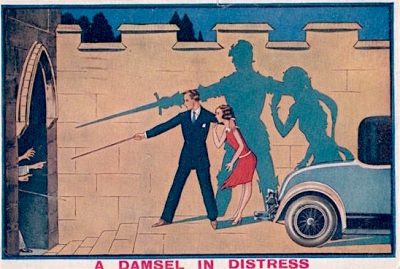#598 Alienated and unmotivated
Dead Flowers
by Alexander Laidlaw
Gibsons: Nightwood Editions, 2019
$19.95 / 9780889713550
Reviewed by Heather Graham
*
 Dead Flowers is a collection of eight stories by a young writer who currently calls the Sunshine Coast home. As far as the reader can tell, only one of the stories, “On Gordon Head,” is actually set in B.C., although if you didn’t know that Gordon Head is the area of Victoria where the university is located, you would miss the connection altogether. But there’s nothing to suggest that the author, Alexander Laidlaw, had any intention of writing B.C. stories; these are tales of another kind altogether.
Dead Flowers is a collection of eight stories by a young writer who currently calls the Sunshine Coast home. As far as the reader can tell, only one of the stories, “On Gordon Head,” is actually set in B.C., although if you didn’t know that Gordon Head is the area of Victoria where the university is located, you would miss the connection altogether. But there’s nothing to suggest that the author, Alexander Laidlaw, had any intention of writing B.C. stories; these are tales of another kind altogether.
The title story is not typical of the other seven in the collection, for a couple of reasons. It is very short — just over three pages in length. It is tightly focused, meaning that unlike some of the stories, it knows exactly where it wants to go and wastes no time getting there. By contrast, “About Franklin,” the longest of the eight stories, and “War Story,” the second longest, involve a great deal of moving about and human interaction before they reach their final destination.
One more way in which this collection’s title story differs from its companions is that its unnamed protagonist is of an indeterminate and unspecified age. All of the others centre around young people trying to navigate the vicissitudes of life. Their challenges are decidedly of the existential sort, although the term “angst,” the anxiety that comes with knowing one has freedom, but not knowing what to do with it, doesn’t seem quite right as a description of the cohort Laidlaw is writing about. Freedom is not what worries them; just the opposite, in fact. They don’t feel they have any control over their lives. In “About Franklin,” the protagonist, Charlie, speculates on the inevitability of events, concluding, “Could I have chosen to behave in a different way? Of course. But what was the point?” The unnamed narrator of “One Time I Witnessed a Murder,” says, “I was basically just waiting for things to get worse.”

Some of Laidlaw’s protagonists are students, some of them have jobs. One even has a wife and baby. Still, they are not the millennial youth who receive so much attention these days in news reports and social commentary, worrying about how they’re going to pay for their education, and whether, after going into debt to finance their high-priced degree or degrees, they’ll ever find a decent job, never mind launch a career. The young people in these stories have little or no interest in the future. Nor are they the kind of engaged youth who worry about climate change or the evils of consumer capitalism. Their concerns are personal, sometimes petty. If these were real kids, the reader would probably want to give them a shake and tell them to get a grip.
In most of the stories in Dead Flowers (the final one, “The No-Cry Sleep Solution,” is an exception, for a number of reasons), the author’s artistic vision is clear: reveal the lives of human beings, especially youth, alienated from the values of mainstream society. The theme of alienation has a long and enduring tradition in literature, and Laidlaw wants to put a contemporary spin on it. What is it like to be a young person in the second decade of the twenty-first century, with so much opportunity on so many fronts, and find yourself drifting, bogging down, not caring?
The purpose of a review of fiction is to evaluate: not, is the work good or bad, but does it work? Does it deliver on the promise? Best of all, will the reader discover something new, even unexpected, and see revealed what was always there, but unrecognized until this moment? All successful art is a combination of artistic vision and craft, and what the reviewer is looking for, is always hoping to find, is a perfect blend of the two. Still, there’s no denying that the craft side of the equation is where the heavy lifting has to be done, because in the end it’s all about execution.

“On Gordon Head,” one of the longer stories here, runs into problems because of its top-heavy opening set-up. Protagonist Elly takes a room in a house with a total of six residents (including herself) and four dogs. There is also Elly’s boyfriend, Sam, who is around a lot. Inexplicably, one of the available rooms in the house remains vacant for the duration of the story, even though the narrator has told the reader how hard it is for students “to find a room near campus this time of year.” Having established the background for his story, Laidlaw puts all of these characters, human and canine, to work; they make various appearances for a few pages, but gradually fade into the background until nothing is left but Elly, her downstairs neighbour Jodi, and Jodi’s two dogs, Franny and Zooey. What are all the others doing while the drama in the basement unfolds? It would seem that they’re simply put aside as extraneous once they no longer have a part to play in the developing story. Even Sam the boyfriend disappears from the action. A more accomplished writer would find a way to write these characters out of the story, not just abandon them at the narrative roadside when their job is done.

“War Story,” about a young man working as a cook in a Montreal restaurant, is problematic in a different way. It suffers from an excess of detail — “excess” meaning that some of the content, instead of contributing to realizing the author’s artistic intent, is a drag on the story. In the opening scene, the cook, David, is walking around the city in the middle of the night with his one-month-old baby in his arms trying to get the infant to fall asleep. Then we move on to the restaurant, where most of the story’s action will take place. There is a large cast of characters: owners, cooks, a cook’s girl friend, baristas, the manager. People are fired, others are hired. There is intrigue, suspicion, stealth, subterfuge. David cuts his finger at work, which leads to a reverie of sorts on a story (the war story of the title) that he wants to write. He goes to a show with a former restaurant employee who gets very drunk and is hit by a car, setting in motion events involving an ambulance, two hospitals, an old man in search of his nephew, and even “a fat, middle-aged woman lying under a sheet” who gets David thinking again about his embryonic war story. It’s exhausting, and feels like someone’s personal account of their worst job ever, not a carefully constructed fictional narrative.
One of the best examples of how a story falls short in its execution is “You’re Getting Older.” The protagonist is Marcelo, described by the narrator thus:
Marcelo didn’t like to look at the big picture. It was hard for him to imagine ever wanting to choose a single career. There was a part of him still that wanted to keep working at a dead-end job, to work for another couple of years without any ambition, and to enjoy the time as it slipped away.
So another unmotivated young person. In fairness, however, Marcelo did think about applying for work at a restaurant in his neighbourhood, “but by the time he reached the place he’d already lost interest in the idea.”
 As our story opens, Marcelo is biking home (almost everyone in Dead Flowers rides a bike) after an evening drinking with friends (yes, more drinking — Marcelo is “somewhat drunk,” according to our narrator) when someone calls out to him for help. This someone is “a lady.” A what? Is this a nineteenth-century story about a high-born woman in distress? Are class distinctions important in what will unfold? No; as it turns out, it’s the author’s way of distinguishing between two female characters: the woman who hails him in the street asking for assistance, and her roommate, who has fallen out of bed and lies semi-conscious on the floor of the room Marcelo enters in his bid to help. The first woman will always be referred to as a “lady,” the second will always be a “woman.”
As our story opens, Marcelo is biking home (almost everyone in Dead Flowers rides a bike) after an evening drinking with friends (yes, more drinking — Marcelo is “somewhat drunk,” according to our narrator) when someone calls out to him for help. This someone is “a lady.” A what? Is this a nineteenth-century story about a high-born woman in distress? Are class distinctions important in what will unfold? No; as it turns out, it’s the author’s way of distinguishing between two female characters: the woman who hails him in the street asking for assistance, and her roommate, who has fallen out of bed and lies semi-conscious on the floor of the room Marcelo enters in his bid to help. The first woman will always be referred to as a “lady,” the second will always be a “woman.”
Is this assignment of nomenclature the most successful way to deal with the narrative requirement to keep two characters clearly separated in the reader’s mind? In a general way it seems an odd technique for any writer to use, but especially so here. “Lady” is not a neutral descriptor; it’s loaded with cultural baggage and just feels weird to encounter in a contemporary story. Rather than using language and storytelling to keep the two women straight, Laidlaw has relied on a device, a verbal trick, to do the work. Again, it’s in the execution that the story falters.
 There’s another problem with “You’re Getting Older,” but of a very different kind. The first woman (the “lady”) gives Marcelo five dollars for his help in getting her roommate off the floor. Marcelo tries to return the bill, and when she refuses to take it, he slips it among “some clutter on a mantle [sic].” But she catches him, and this time sticks the bill into the collar of his jacket before manoeuvring him out the door and bolting it behind him. Marcelo thinks about leaving the fiver somewhere but can’t find a suitable spot, so he stuffs it into his pocket and heads home, where he promptly “took off all his clothes and put them in the laundry basket.”
There’s another problem with “You’re Getting Older,” but of a very different kind. The first woman (the “lady”) gives Marcelo five dollars for his help in getting her roommate off the floor. Marcelo tries to return the bill, and when she refuses to take it, he slips it among “some clutter on a mantle [sic].” But she catches him, and this time sticks the bill into the collar of his jacket before manoeuvring him out the door and bolting it behind him. Marcelo thinks about leaving the fiver somewhere but can’t find a suitable spot, so he stuffs it into his pocket and heads home, where he promptly “took off all his clothes and put them in the laundry basket.”
Is this the end of the five-dollar bill? Has its role in the story come to an end, as would seem logical, since nothing is said about taking it out of the pocket and putting it somewhere? No, the reader has not seen the end of this bit of currency.
The following day, during a phone call with his mother, who urges her son (not for the first time, the reader suspects) to “pursue financial security early on,” Marcelo “looked at the five-dollar bill the lady had given him” and thinks about using it to buy a lottery ticket. Just like that, the five dollars is back in the story. Where has it been since the night before? We never find out; it just miraculously reappears when needed to move the action along. In the end, Marcelo puts the bill into his wallet, and that evening uses it to buy “yet another round” of drinks while out playing pool with his friend Dave.
Life may be marked by randomness; successful art is not. In other words, everything in a literary work must have a purpose, or it shouldn’t be there in the first place. The five-dollar bill in “You’re Getting Older” does indeed have a purpose, and an important one: like the discarded pot of tender shoots in Steinbeck’s short story “The Chrysanthemums,” the money that Marcelo spends so carelessly on more beer is the embodiment of the story’s meaning. The reader should never have lost track of that bill, not for a second.

Evaluating the stories in Dead Flowers on the basis of literary achievement, the most accurate description is to say that they are clumsy. They are not well executed. Language, like any other artistic medium, requires a sensitivity to its possibilities, and a deft hand in the handling. There’s no pleasure in maligning the efforts of a young writer, especially one at the “emerging talent” stage of their career. On the other hand, there is nothing to be gained by offering false praise (and raising false hope) for work that just isn’t ready for prime time.
So the question is, how did this happen? Who or what is responsible?
The publisher of Dead Flowers is Nightwood Editions, a B.C.-based company that, in its own words, “is committed to publishing and promoting the best new poetry and fiction by writers across Canada. Our goal is to give readers a chance to explore the high-quality work of emerging Canadian writers, and new writers an opportunity to publish their work in book form.” A laudable goal, but what happens if it isn’t possible to do both?
In the case of Dead Flowers, the publisher has put its money on giving an emerging writer the opportunity to put his work out into the world, rather than on exposing the reader to the very best. How much better it would have been for everyone if, when Alex Laidlaw came knocking, manuscript in hand, Nightwood Editions had turned him around and sent him back to the drawing board — or more accurately in this case, back to the writing desk — with these words of advice and encouragement: “Too soon.”
*

Heather Graham worked as an editor for nearly thirty years, and during that same time made more than one foray into the seductive but fraught business of bookselling. Now officially retired, she indulges her bookish inclinations by taking on the occasional editing project, as well as trying her hand at the storytelling process itself and doing some of her own writing. She lives on Malcolm Island in Queen Charlotte Strait.
*
The Ormsby Review. More Books. More Reviews. More Often.
Publisher and Editor: Richard Mackie
The Ormsby Review is a journal service for serious coverage of B.C. books and authors, hosted by Simon Fraser University. The Advisory Board consists of Jean Barman, Robin Fisher, Cole Harris, Wade Davis, Hugh Johnston, Patricia Roy, David Stouck, and Graeme Wynn. Scholarly Patron: SFU Graduate Liberal Studies. Honorary Patron: Yosef Wosk. Provincial Government Patron since September 2018: Creative BC
“Only connect.” – E.M. Forster

3 comments on “#598 Alienated and unmotivated”
To Heather Graham:
The purpose of a book review is to give the reading public an overall idea of what the reviewed book is, not to pontificate on the essence and ideals of literary art, and whether or not the reviewed work lives up to these abstract expectations. You have your reasons and motivations for reading, as does everybody else. These reasons and motivations change from person to person, and evolve over time. Also, you might be more careful when using the adjective “clumsy” to describe a person’s writing, when your own writing is not, by any stretch, an aesthetic benchmark.
You are reviewing the book, it seems to me, in bad faith, because instead of giving us the information we need to determine whether the book is something we’d care to read, you offer haughty, prescribed strategies for literary analysis:
“All successful art is a combination of artistic vision and craft, and what the reviewer is looking for, is always hoping to find, is a perfect blend of the two. Still, there’s no denying that the craft side of the equation is where the heavy lifting has to be done, because in the end it’s all about execution.”
Thanks Heather, we’ll all remember this unoriginal, poorly-written dose of Creative Writing 101 the next time we pick up a book of our choosing and read it our own way, with our own tastes, and for our own reasons.
To Dustin Cole
I agree wholeheartedly that a review should provide the kind of information someone needs to determine whether a book is something he or she would “care to read,” meaning commit time to, and maybe even money if our potential reader intends to put down cash and buy a copy of the book. That’s the information my review offers. Denouncing me as an inept reviewer — not to mention a lousy writer — doesn’t change the fact that there were missed opportunities here. The stories in Dead Flowers needed more work before they were sent out into the marketplace, where they will have to compete for the time and attention and dollars of, to use your own term, the reading public.
Comments are closed.